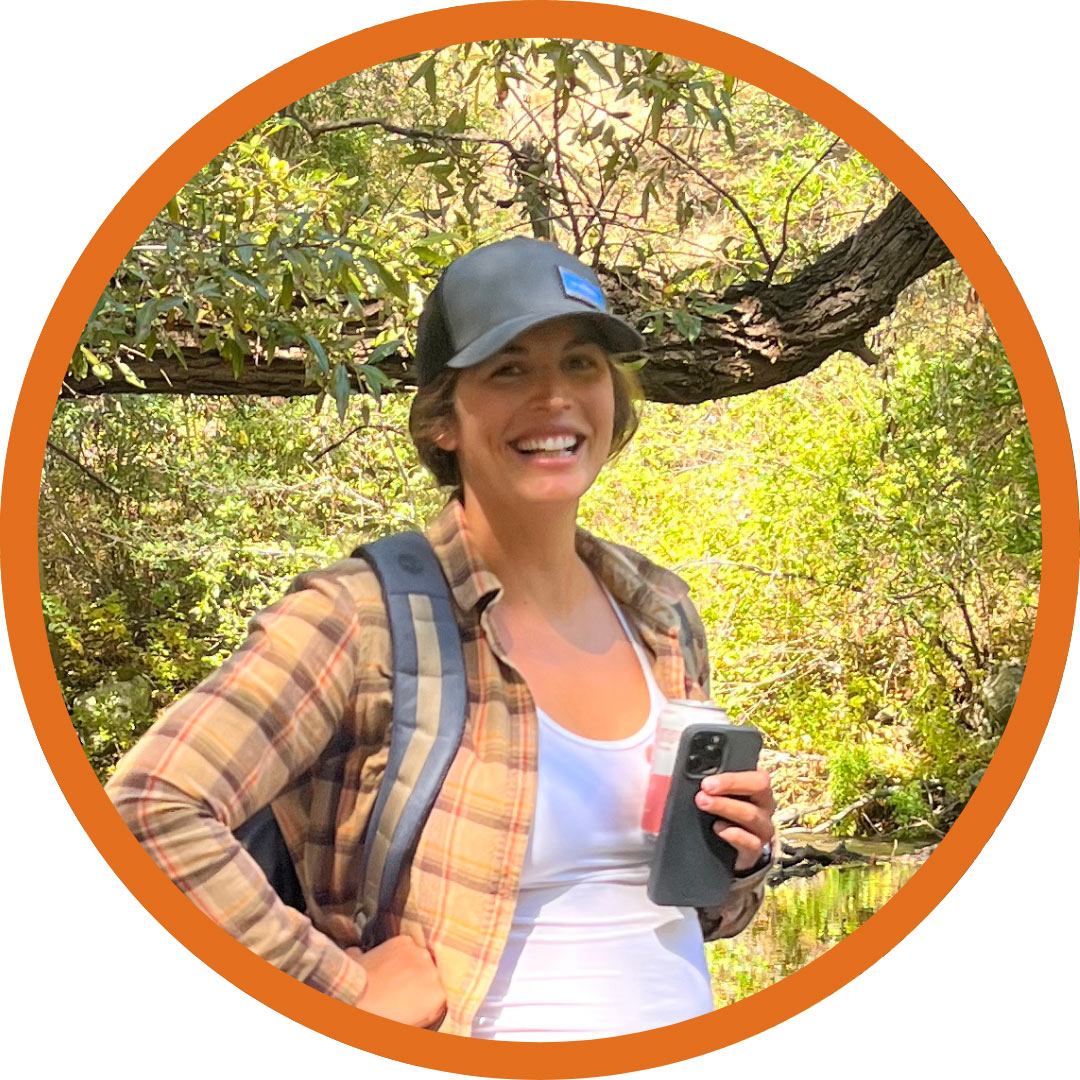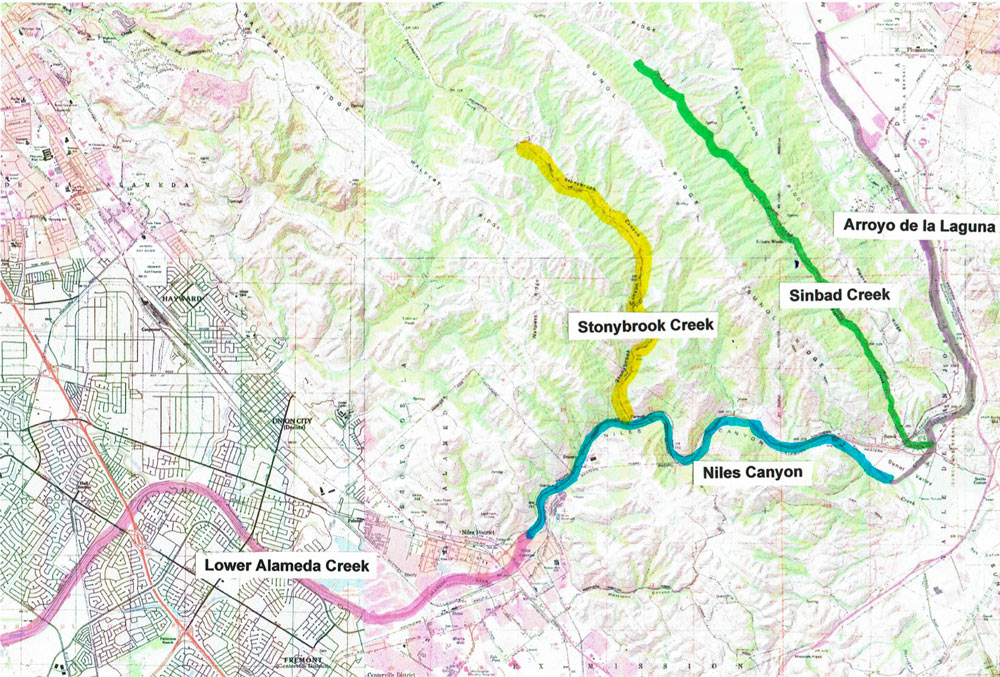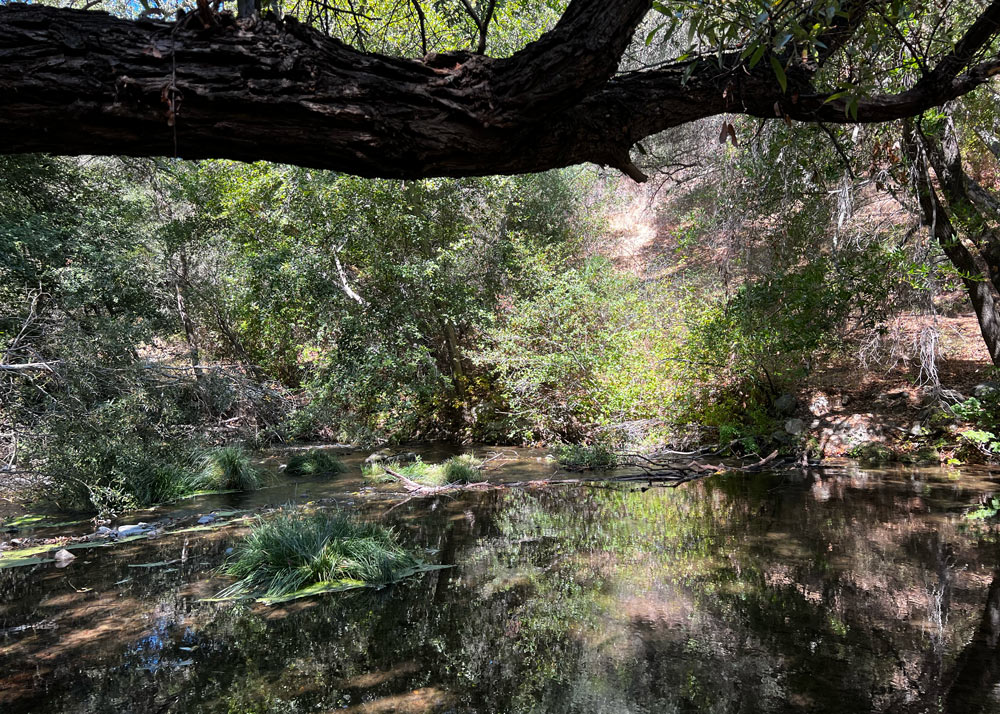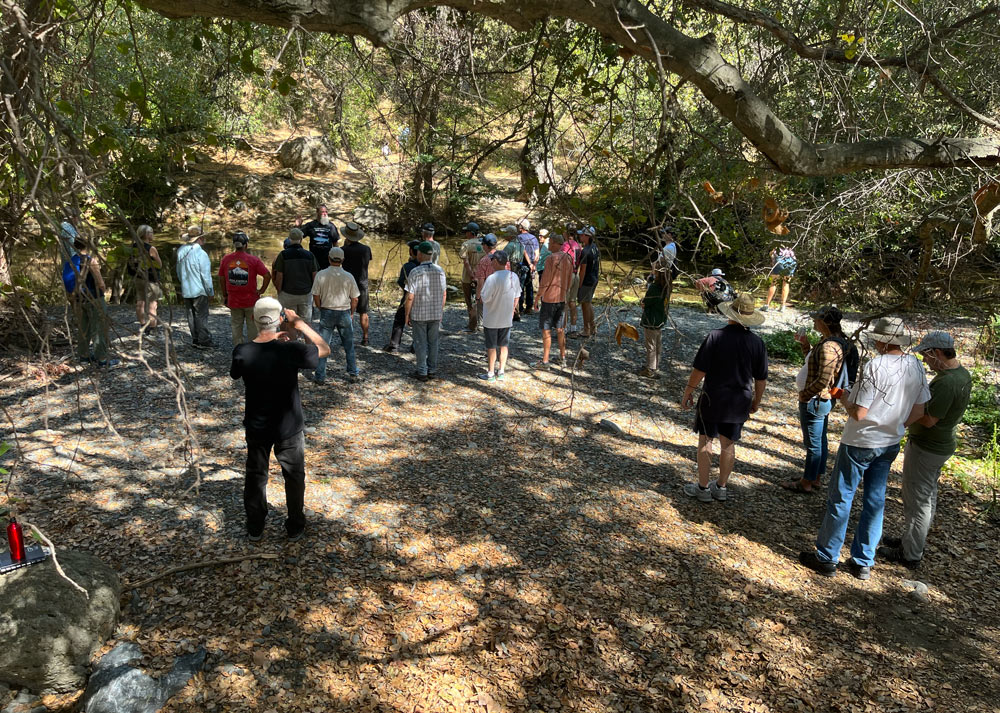Alameda Creek is the largest watershed in the Bay Area, and for the first time in over 50 years salmon and steelhead will be able to access the watershed.
To better understand how fish populations utilize and move through the newly connected Alameda Creek watershed, we need to watch them, which is why we are working with partners to launch a volunteer monitoring program.
Previously, fish had limited access to Alameda Creek, but soon they will be able to migrate above the downstream BART weir in Fremont to spawn. Migration is made possible by a fully-operational fish ladder at the weir and additional fish ladders at three upstream dams on Alameda Creek. This incredible opportunity for salmonids to migrate throughout Alameda Creek is the product of decades of hard work to improve fish passage by the Alameda County Water District, Alameda Creek Alliance (ACA), California Department of Fish and Wildlife (CDFW), San Francisco Public Utilities Commission (SFPUC), and CalTrout.
Launching a Volunteer-led Fish Monitoring Program
CalTrout is proud to partner with and support ACA in our joint effort to launch a volunteer monitoring program. A big thank you to all our volunteers who came out on Sunday, September 25, to our volunteer training at the creek! With nearly 40 volunteers, we were thrilled with the turnout.

CalTrout Bay Area Senior Project Manager Claire Buchanan shared a few words about her experience this past weekend:
“The amazing turn out on Sunday only added to my excitement for this monumental moment for Chinook salmon and steelhead in Alameda Creek. With some good storms, this Fall and Winter could be the first time in decades that locals in the Alameda Creek watershed will have spawning salmon and steelhead in their own backyards. The level of interest and support for conserving salmonids in the Bay Area that our members showed by coming out to this training gives me hope that the momentum established by the agencies and NGO’s will continue to grow with added public interest, education, and support.”
This fall and winter, our newly trained volunteers will be regularly monitoring salmon and steelhead re-entering the watershed through visual observations of fish and spawning beds throughout different stretches of the creek. The volunteer effort will focus on areas that are not currently covered by regular agency monitoring and will fill in geographical gaps in the watershed. This monitoring work is crucial to inform future restoration efforts along the creek and to deter poachers. We can’t do it alone – one more big thank you to our volunteers!

Interested in future volunteer opportunities with CalTrout? Email Senior Project Manager Claire Buchanan (cbuchanan @ caltrout.org) or sign up for our mailing list to stay informed on how you can get involved.


Cover Photo: CalTrout Contractor Will Ware explains monitoring procedures to a group of volunteers. Credit: Claire Buchanan.





